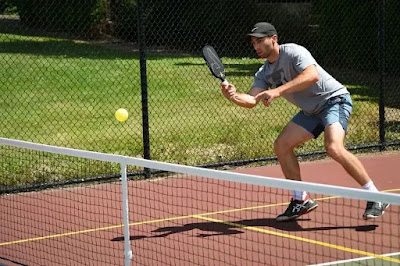Can You Snowboard If You Have Big Feet? This is How
Can You Snowboard If You Have Big Feet? This is How
 |
| Can You Snowboard If You Have Big Feet? This is How |
People frequently choose their snowboard length in relation to their height. While board length is significant, if you have large feet, board width is more likely to be the deciding factor.
With big feet, you can surely snowboard. Men with US 10.5 (UK 10) or larger feet demand broader snowboards than men with smaller feet. Wider boards typically measure 10.2-10.6" (26-27 cm) in width and have large or extra-large bindings. They will keep you from "booting out" by preventing heel/toe drag.
In this article, I'll go into heel/toe drag in further detail, as well as how to identify the correct size board for your foot and the differences you'll experience when utilizing a wide board. If you have huge feet, you may need to modify your approach slightly. I wear a size 13 shoe and am constantly learning new things.
Can You Snowboard With Big Feet?
The quick answer is that both men and women with large feet can snowboard. They simply need to invest in larger boards. Women rarely require really wide snowboards; at most, they must go up to a men's size normal. As a result, men are typically the only ones that use broad snowboards.
Going up a board size as people age, regardless of gender, is possible, especially if they begin boarding at an early age.
This SnowboardProCamp YouTube video breaks down the different board widths and helps you select which size board is perfect for you:
Let's take a closer look at why someone might need to go up a board size.
People's feet grow larger as they age.
People need to go up a board size since they are getting older and their feet are growing. People who start snowboarding as children may go through several board sizes before settling on one in adulthood.
People's feet grow larger as they gain weight.
Another reason someone might need to size up is if they gain weight. Although gaining weight will not make your feet longer, it will make them wider. In such circumstances, the individual may need to purchase larger shoes to suit their broader feet.
That person may be able to keep their regular shoe size if they get the "wide width" variant.
When people's feet get broader, they usually have to go up a shoe size to a shoe that is not just wider but also longer.
The fact that the foot is growing is not in and of itself an issue. That is not why most people need to purchase larger snowboards. Their feet are dangling over the board's edges, causing heel or toe drag.
However, it may have an impact on purchasing the suitable boot size.
What Is Heel/Toe Drag?
When someone's feet are too big for their snowboard, they will experience heel and toe drag. In other words, their toes or heels protrude from the board's edges.
As a result, when they tilt the snowboard to turn, jump, or spin, their heels or toes drag in the snow and cause them to tumble. Professionals refer to this as "booting out."
Some snowboarders move their bindings farther apart and to a wider area of the board. This keeps their heels and toes from protruding too far over the edge. KiteVanMan's video regarding this change may be seen here:
However, doing so will necessitate completely adjusting your posture on the snowboard, and there's no assurance it'll work depending on your boot size. Going up to a larger board is a better alternative.
How Increasing the Size of Your Board May Affect Your Boarding
So what difference does it make if someone needs to go up to a wide board? For a great snowboarder with a lot of skill, it usually won't matter much because they have more control over the board and can make adjustments to prevent booting out. But what if you're not a professional?
Wide boards necessitate more control.
Going up to a wide board may be tough for beginners and intermediate snowboarders at first. Wider boards require more energy and power to move and control. They're also more difficult to turn and manipulate when performing jumps, spins, and other feats.
Wider boards are slower on some ski slopes.
Wider snowboards will also be slower than narrower snowboards since they are heavier and sink lower into the snow. It's not much, and depending on your weight, you might not even notice. However, the heavier a board is, the deeper it dips into the snow and the slower it becomes on particular ski slopes.
Wider boards are faster going downhill on steep terrain.
However, if someone is riding a wide snowboard downhill, they will gain far more speed than if they are riding a small snowboard. This is one of the reasons why rookie snowboarders should avoid using wide snowboards. A broad snowboard can accelerate dangerously quickly.
Can You Freestyle on a Wide Snowboard?
Some tricks, such as the halfpipe, may be more difficult to execute on a broader board. None of them, however, are impossible. Most people only need to learn to modulate the amount of force they put behind their movements.
Although wide boards are only a few millimeters wider than conventional boards, the difference can necessitate a lot more energy to get the board to move properly.
But, as long as you're willing to put in the effort, it shouldn't be long before you're able to accomplish everything on a wide board like you would on a standard board.
What Are the Best Wide Snowboards for Big Feet?
There is no single answer because it isn't just about the feet. Height, weight, posture, and boarding style are all factors in selecting which snowboard is appropriate for a particular rider. Nonetheless, there are a few pointers to bear in mind.
Best Boards for Heavy Riders
Snowboarders who are heavier or have larger feet should select boards with high-quality wooden cores and carbon or laminate reinforcements. Larger riders benefit from boards with a medium-to-heavy flex.
Best Boards for Various Boarding Styles
True Twin Shaped snowboards are ideal for novice snowboarders and boarders that enjoy riding all-mountain terrain. Power and freestyle snowboarders like directional boards. Snowboards with a volume-shifting design are usually the best choice for tree runs.
The Good Ride has an outstanding guide to snowboard forms that can assist in selecting the best-shaped snowboard for any need.
Product Suggestions
Ideal for Big Riders: Men's Lib Tech Skunk Ape HP Wide Snowboard
The Lib Tech Skunk Ape board is suited for bigger riders with large feet, thanks to its medium-stiff flex, Aspen and Paulownia core, and directional twin design. The board has a waist width of 26.8 cm (11.26 in.) and is light but robust.
Its control and response times are perfect for a broader board, owing to the Magne-Traction edge, which aids in weight distribution.
Rossignol Templar Men's Snowboard is recommended for intermediate riders.
Rossignol's Templar board offers three wide alternatives for riders who haven't yet achieved pro status. Its directional form is ideal for all-mountain riding, but it's also versatile, making it an excellent choice for intermediate riders. It is suitable for freestyle, all-mountain, and tree runs.
Ride the Warpig Men's Snowboard if you prefer short boards.
Ride's Warpig is a good choice for riders who like shorter boards but still require a broad waist. It comes in sizes ranging from XS to XL, with waist widths ranging from 25 to 27.7 cm (9.84 – 10.91 in).
Its core is made of Aspen, Bamboo, and Paulownia wood, and it's ideal for intermediate to advanced all-mountain boarding. The Warpig's response time is slightly slower, but its small weight allows it to soar through the snow. If you want speed, the Warpig is the way to go.
Conclusion
There is no "best snowboard" for everyone, but there is a "best snowboard." It is simply up to each individual to discover their own. The greatest snowboard for folks with wide feet is one with a wide width nine times out of ten.
Fortunately, there are numerous possibilities, and needing to step up a size to a broad board does not imply that you will lose your talent. Everything that a conventional board can do can likewise be done on a wide board. To make it happen, you only need to find the appropriate mix of power and force.





